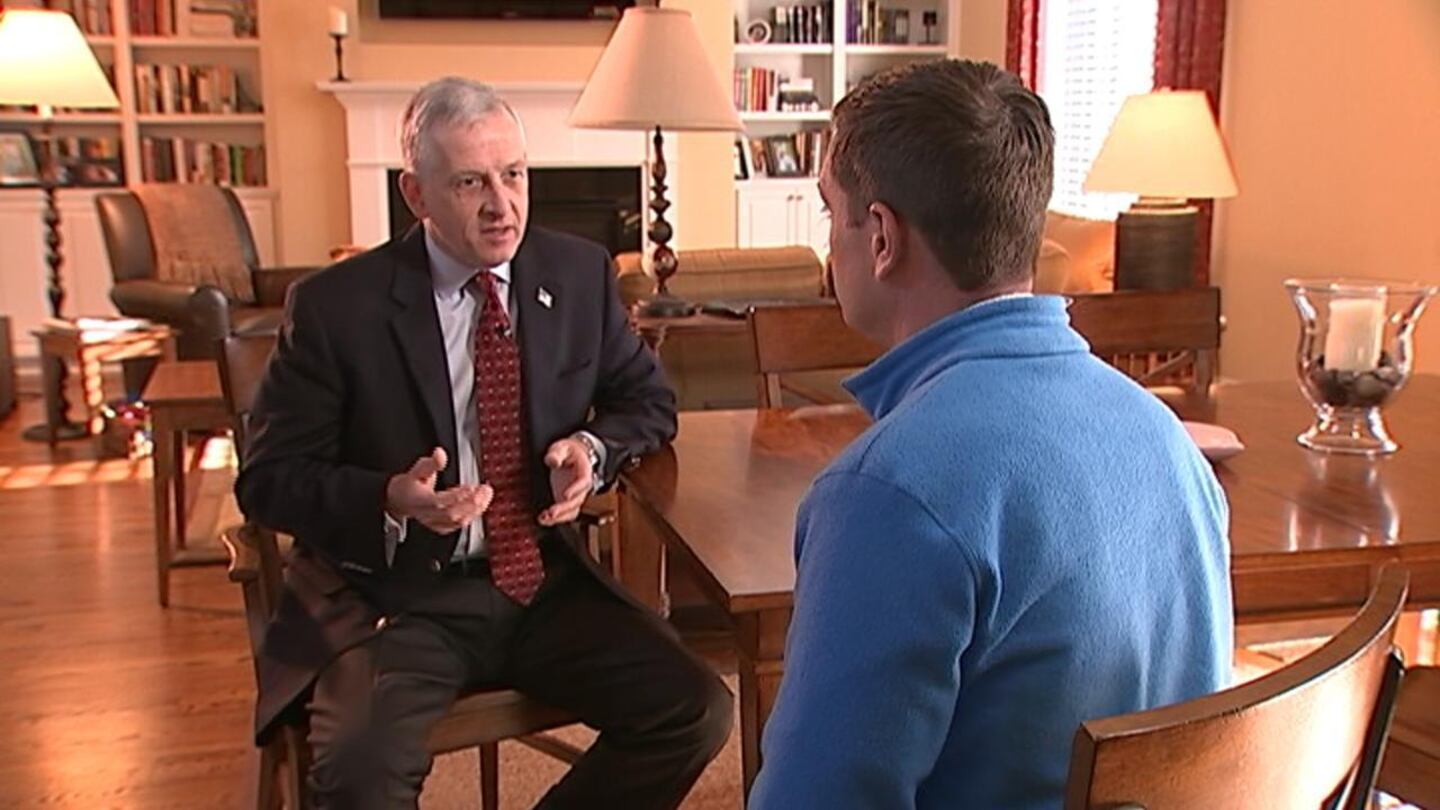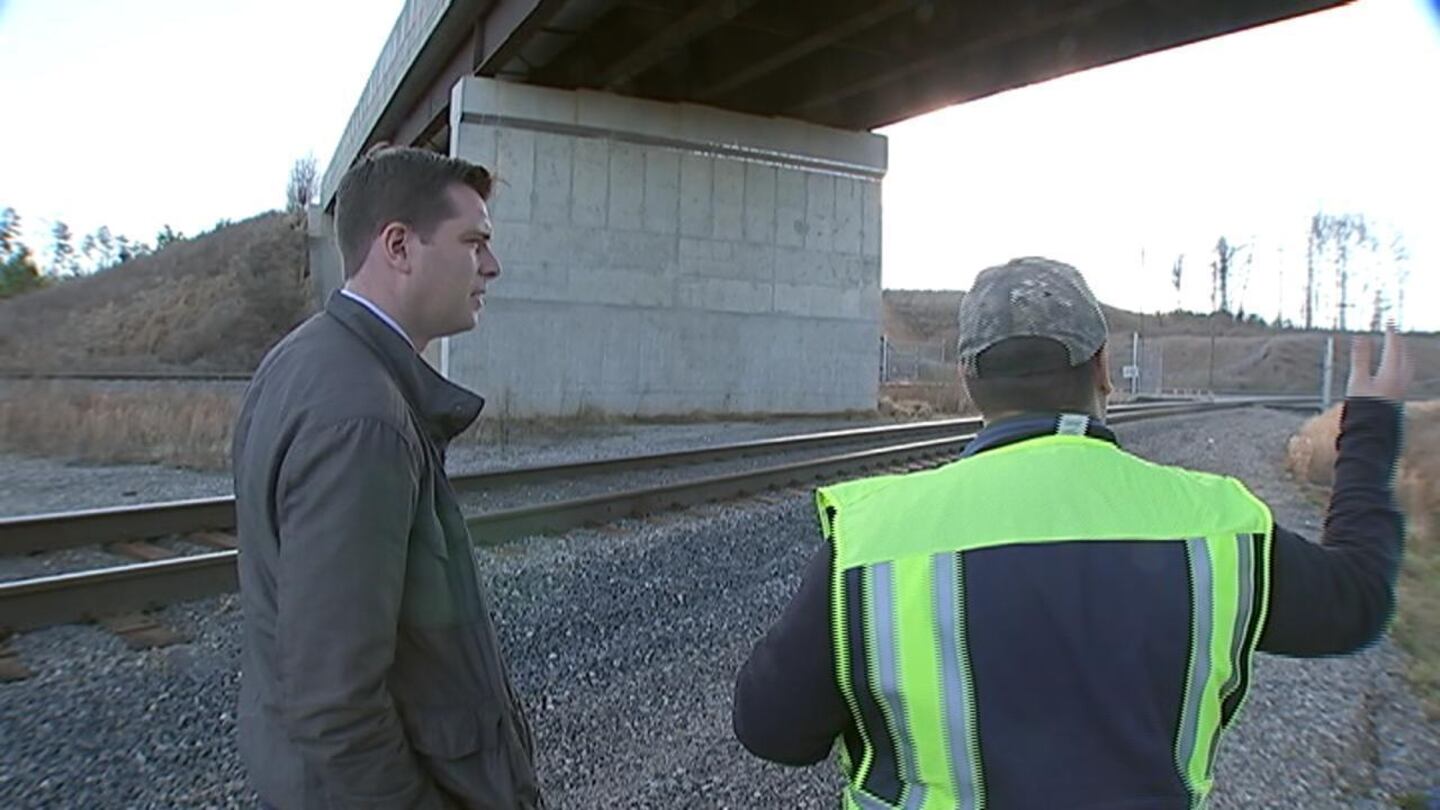CHARLOTTE, N.C. — On any given day, 681 planes take off from Charlotte-Douglas International Airport, and at any time, each one could be just feet from disaster.
A plane that hit a deer while departing Charlotte’s airport on Wednesday became one of those moments. A flight headed to Gulfport, Mississippi hit a deer that ran onto the runway. It forced the pilot to declare an emergency and turn around.
[Channel 9's coverage of emergency landing after plane hits deer]
Click PLAY to watch emergency landing
But before Wednesday’s emergency landing, Channel 9 anchor John Paul began investigating wildlife strikes at Charlotte’s airport.
“At about 500 feet we hit a bird,” a PSA pilot radioed to the tower in Charlotte.
“500 feet you hit a bird?” the tower said.
“That’s affirmative,” the pilot said.
The radio traffic came from a flight that took off from Charlotte on Jan. 21. It was able to continue, but birds and wildlife are a growing problem at the airport.
John Paul uncovered that in 2015, the last complete year of statistics, there were 198 wildlife strikes at Charlotte-Douglas. Those were mostly birds, but a coyote was hit on the runway.
A search of the FAA database showed that, when you look at the number of incidents, Charlotte-Douglas was the ninth worst in the world. It also showed a troubling trend: Since 2007, Charlotte-Douglas has seen a 518 percent increase in wildlife strikes.
[READ: FAA report on wildlife strikes]
Jim Whitaker has firsthand knowledge of what wildlife can do to a plane. He was sitting in seat 19F on Flight 1549, also known as the Miracle on the Hudson.
“I don’t think anybody thinks they’re going to survive an airplane crash,” Whitaker said. “At first hearing the story, I couldn’t believe that was true, that something so small, (a) bird, could take down an airplane.”
Whitaker still flies several times a week, but he didn’t know that his home airport was a hotbed of wildlife activity.
“I had no idea that Charlotte had such a high bird strike rate,” Whitaker said.
But the airport is trying to reduce those numbers with a pickup truck and a sharp eye.
David Castaneda, the wildlife coordinator for Charlotte-Douglas, took John Paul inside the airfield to demonstrate his job. He tries to run off the animals any way he can, which includes firing pyrotechnics at the birds to get them to leave.
Castaneda said 90 percent of the airplane bird strikes are reported below 3,500 feet. Castaneda and his colleagues watch a 5-mile radius around the airport, which is the area where planes travel at that altitude.
His team saw a significant increase in strikes on a nearby runway and investigated the problem.
“We found they had made a bunch of nests along that ledging right there,” Castaneda said, pointing to the underside of an overpass.
Castaneda’s team ended up installing a metal trim to move the birds from the large nesting area.
“So hopefully that will drop the number of swallow strikes on that runway,” Castaneda said.
He’s well aware of Charlotte’s worldwide ranking and is trying to put a dent in it. He chalked it up to increasing air traffic.
As air traffic increases, Castaneda knows that run-ins are more likely. But his focus is on the pilots and passengers who have to share the air.
“I’m out here just trying to make it better for them so they can get home safe every night,” Castaneda said.
RECENT INVESTIGATIONS:
- NC employers may be breaking workers' comp laws
- Charlotte-area pastor accused of targeting several women, abusing them
- Rock Hill city leaders question tiny homes for homeless
- CMPD deals with rise in dog attacks, some classified as severe
- Family waits for answers year after Stanly Co. woman's death
- Dog owners blame popular flea medicine for pets' deaths
- 9 Investigates: An inside look at how feds took down MS-13 in Charlotte
- Health violations uncovered at Charlotte's best restaurants
- 9 INVESTIGATES: International hacking group attacks Charlotte websites during riots
Cox Media Group








